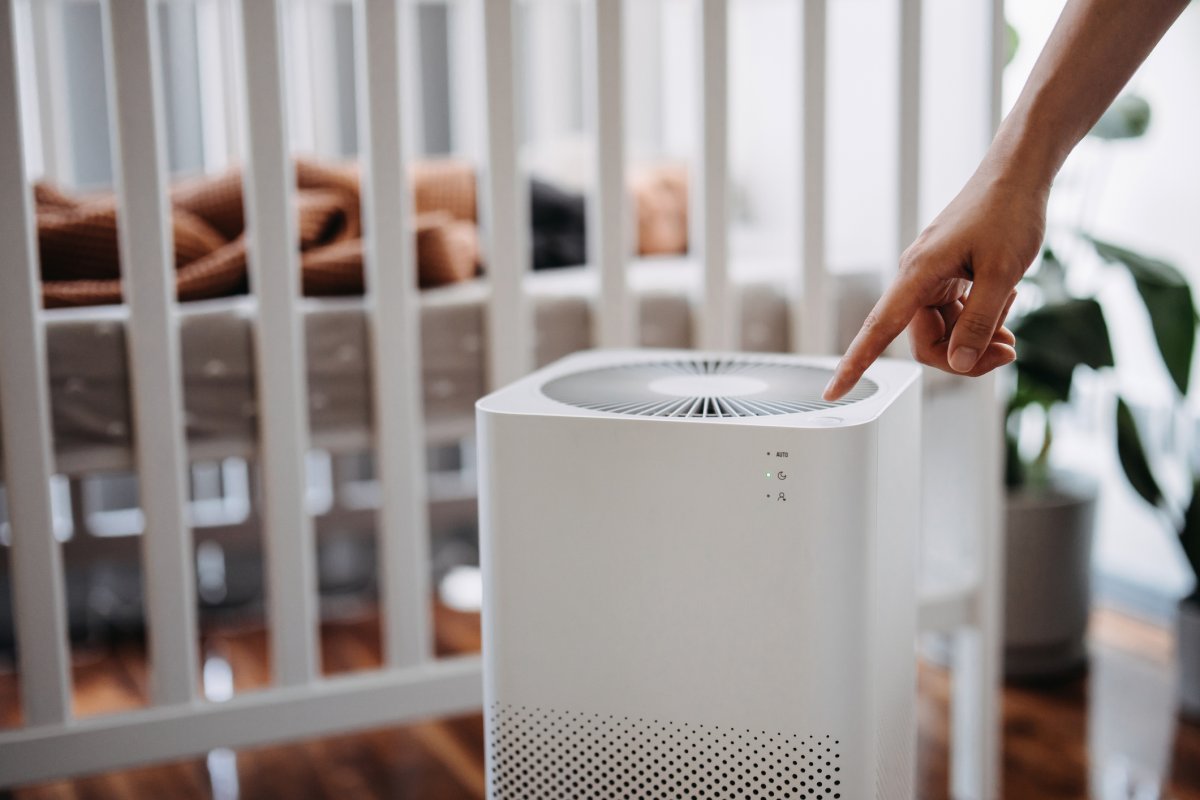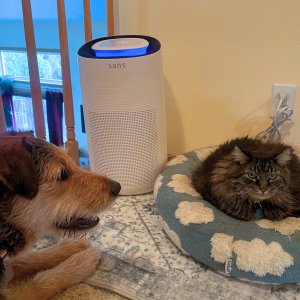

We may earn revenue from the products available on this page and participate in affiliate programs. Learn More ›
Air quality—both outdoors and inside our homes—plays an essential role in our health, so much so that the U.S. Environmental Protection Agency (EPA) links improved air quality to better life expectancy. Yet many people live in areas experiencing poor air quality, which is only exacerbated by rising temperatures and wildfires.
To help Americans better understand their local air quality, Healthnews released a report assessing air quality data from EPA covering nearly 1,000 U.S. counties. The report looked at common ambient air pollutants like ground-level ozone, particulate matter, carbon monoxide, nitrogen dioxide, and sulfur dioxide. Using the Air Quality Index (AQI), a color-coded system for forecasting and reporting daily air quality, various locations were categorized as “unhealthy for sensitive groups,” “unhealthy,” “very unhealthy,” or “hazardous.” The result is a list of the top 100 counties with the worst air quality in the U.S.
Check out the list (see the chart) to find out where your county ranks, and learn what you can do to stay safe in your home when the air quality outdoors is raising the alarm.
Where Air Quality Is the Worst
Here are the top 10 counties with the worst air quality, according to the Healthnews report. Note that half of the counties are located in California. Further down the list, counties in Illinois and Wisconsin often appear as having poor air quality.
- Bannock County, Idaho
- Riverside County, California
- San Bernardino County, California
- Uintah County, Utah
- Maricopa County, Arizona
- Duchesne County, Utah
- Tulare County, California
- Cook County, Illinois
- Inyo County, California
- Imperial County, California
How Air Pollution Can Impact the Indoor Air Quality of Your Home
Every day, EPA analyzes air quality via the AQI. The higher the AQI (based on a 0 to 500 scale), the more pollution in the air, making it more dangerous to be outside. An AQI above 100 is unhealthy for sensitive groups and 150 and above is typically unhealthy for the general public.
During these risky days, people should stay inside and minimize outdoor activity to avoid air pollution that results from smoke, vehicle exhaust, dust, pollen, industrial emissions, gas-fueled yard equipment, and other sources. However, outdoor air pollution can easily seep into a home, causing concerns for the indoor air quality as well. Pollutants like ozone and nitrogen oxides that enter the home can end up reacting to chemicals inside the home, such as off-gassing from furniture and building materials, creating harmful chemical byproducts that make the indoor air even more toxic.
Air pollution can end up inside a house by infiltration, or the flow of air through openings; joints; and cracks in ceilings, walls, and floors. It can also enter by either natural ventilation through open windows and doors or mechanical ventilation like fans or ductwork.
Older homes are particularly susceptible to outdoor pollutants entering because they are not as airtight as newer, more energy-efficient homes designed to limit the rate of exchange between indoor and outdoor air. They may also have worn out seals and weatherstripping around doors, windows, and other openings that no longer effectively keep polluted outdoor air from seeping in.

How to Improve Your Home’s Indoor Air During Poor Air Quality Days
When the AQI for your area reaches a level of concern, heed local warnings and stay indoors when possible. Keeping indoor air quality at a healthy level also is a priority. Cheryl Nelson, certified broadcast meteorologist (CBM), certified natural disaster and travel preparedness expert, and founder and owner of Prepare with Cher, LLC, offers the following tips for protecting indoor air quality when there is poor air quality outdoors:
- Keep doors and windows closed.
- Run a HEPA air purifier inside your home to clean the air. The size of the air purifier you need depends on the size of your room, and you may need to run air purifiers in multiple rooms. HEPA air purifiers pull contaminated and dirty air into the unit, forcing it through a powerful filtration system that removes pollutants and odors. The result is that cleaner, fresher air gets circulated back into the room several times per hour.
- Install a high-efficiency activated carbon air filter. These filters can remove up to 99 percent of fumes, smoke, and other harmful chemicals, ensuring cleaner, safer air in your home.
- Use weatherstripping to seal cracks around doors and windows.
- During the warmer months, run the air conditioner and/or fans to stay cool and to keep the inside air circulating. If you have a window air conditioning unit, close the outdoor damper.
- Run your air conditioning (if during the warm season) and close the fresh air intake to limit outdoor air particles from entering your home. Keep the fan turned on to keep air circulating inside your home.
- Don’t burn candles, smoke cigarettes or cigars, fry foods, spray aerosols, or use gas furnaces or wood-burning stoves.
Ways to Continuously Monitor Outdoor and Indoor Air Quality
Stay informed about air quality conditions in your area by referring to EPA’s AirNow website, the National Weather Service, and local and national media like The Weather Channel. You can also take steps to assess your home’s indoor air quality by testing and monitoring it yourself. Set up an indoor air quality monitor that tests for a variety of air pollutants like particulate matter, ozone, and volatile organic compounds (VOCs) and be sure to also test for mold.
